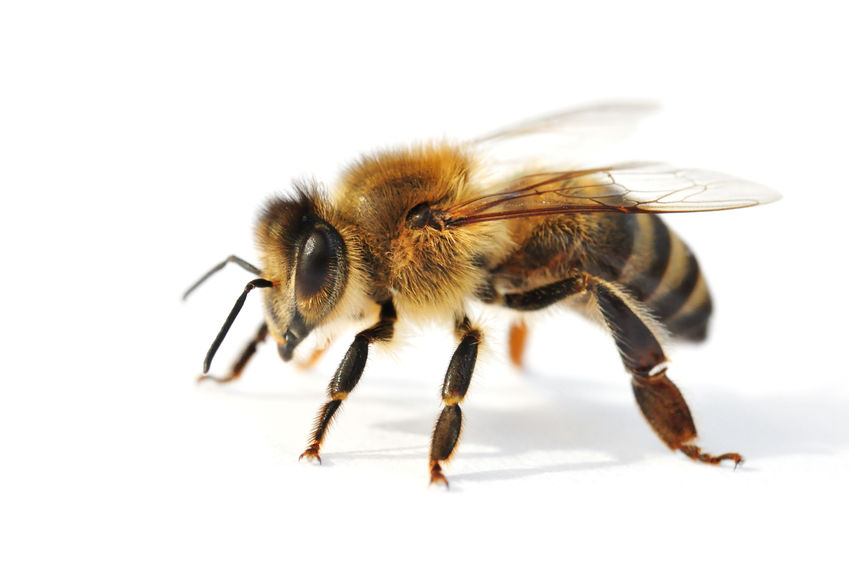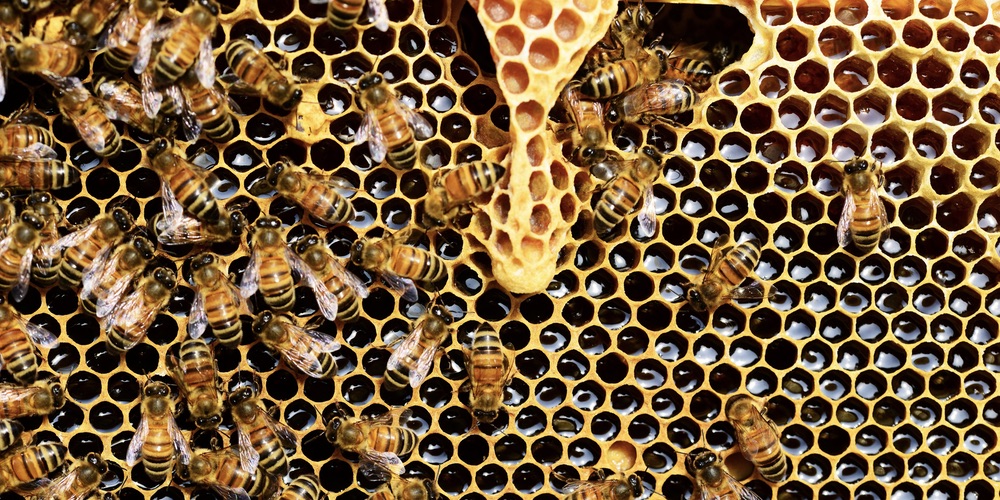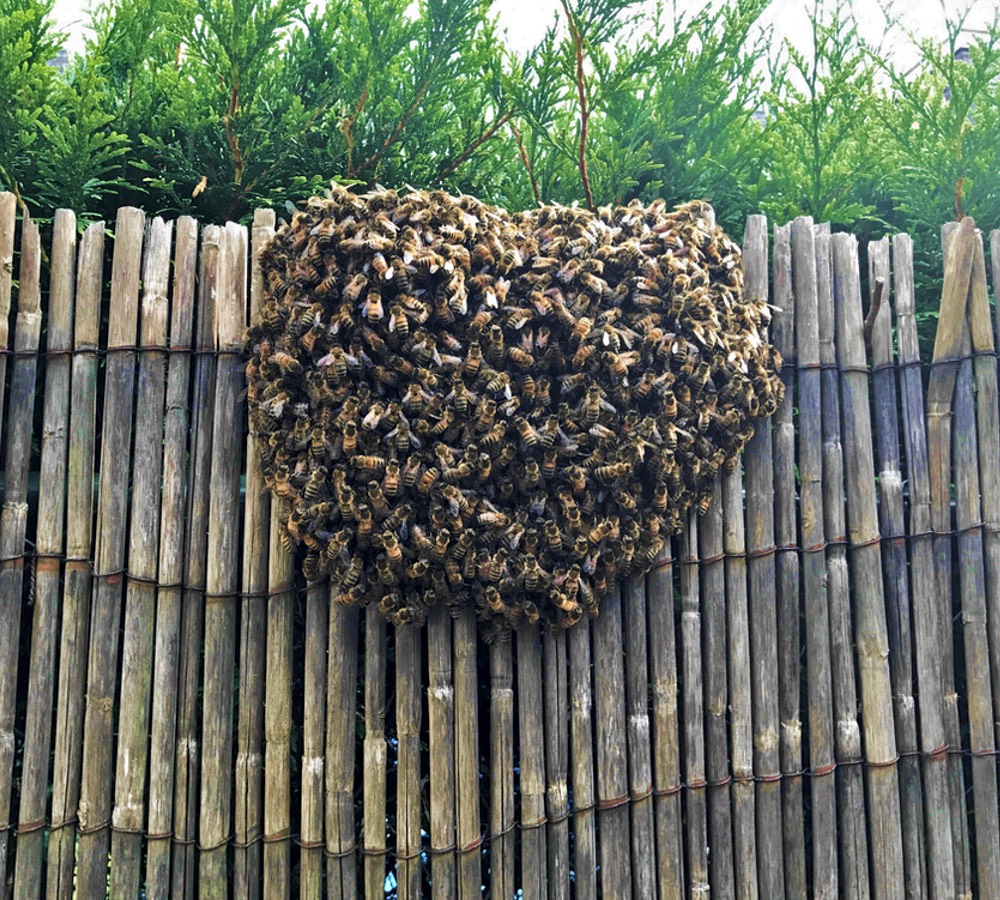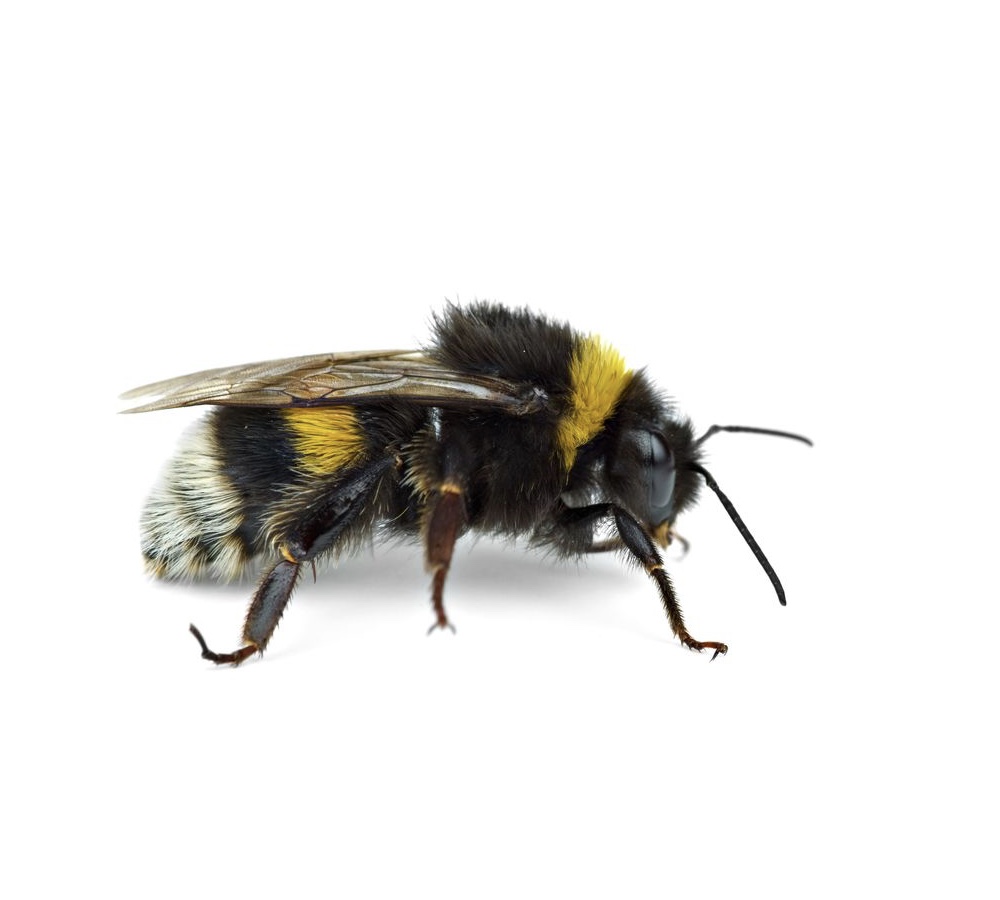Unlike wasps, bees are among insects that should not be controlled. Bees and bumblebees pollinate crops and for that reason are very important to our ecosystem. At present, bees are threatened with extinction and therefore their population actually needs to grow. Protect Pest Control is aware of this. We therefore refer you to a beekeeper. The beekeeper tries in an animal-friendly way to ensure that the nest can move. This also applies to bumblebees. We help with keeping the bees and bumblebees away.

The main color of the honey bee is brown with a dark abdomen and brown hair bands. Honey bees collect nectar, pollen and make propolis (a type of building material). The entire honey bee population, except the males, overwinter in the hive or hive.
The only one who lays eggs is the queen, because only she has ovaries and a sac for seeds. A young queen flies out for a “nuptial flight” to mate and be fertilized. These nuptial flights take place about 7 – 10 times during the queen’s life. After the last nuptial flight, she is fertilized for the rest of her life. The queen can decide whether an egg becomes a male or a female. By fertilization it becomes a male, also called a dar. If she does not, a female, also called a worker, is created.

Bees work incredibly hard for the hive, but by autumn the queen’s fertilization stops and males are killed by the workers or chased out of the hive and then starve to death. The workers born between August and November help the female population through the winter and die the following spring. The queen can live up to 5 years and lays 2,000 to 3,000 eggs per day, they are fed sugar water.
When larvae emerge after three days, the diet changes to protein-rich food. Six days later, the larva develops into a pupa and the cell the pupa is in is sealed with wax. It takes about 12 days for the pupa to develop into an adult bee and then the bee gnaws its way out of the cell. They use the young adult bees’ long hairs to clean the nursery cells like true cleaning bees!
Brush bees are promoted to construction bees after 11 days and then start making wax a combs before becoming a true fetch bee after three weeks. A fetch bee flies out of the nest to get nectar, pollen, hard and water.
As indicated, honey bees are very useful in pollinating plants and cultivated crops and therefore should not be controlled. Bees do a kind of dance to figure out where to find flowers and follow the scent trail of their nestmates to find the nest again. This scent trail is spread by flapping their wings. Flowers have a stamen on which there is pollen and when the bee lands on the flower they collect this flour by their legs. Pollen is used to make wax and as feed juice for larvae.
Nectar is used to provide honey for bees and larvae and can be found in the heart of a flower. Bees are the only insects that can suck the nectar from flowers with their long tongues and then turn it into honey. Real honey is therefore a craft of this special species.

The nest has guardians who check the quality of nectar and protect the nest. Bees rarely sting and only out of necessity because their sting is always left in the skin of humans and they will die afterwards. Also, only females have a sting. A wasp, on the other hand, can retract its sting.
Another special method of protection is when the hornet attacks the nest. The guards then gang up on the hornet and begin flapping their wings wildly, warming the temperature of their bodies and causing the hornet to die from the heat produced.

All bumblebee species are stocky and sturdy and yellowish brown on the head and back. Bumblebees are 11 to 13 mm in size and have pelt-like fur, which allows the animal to thrive in temperate climates, such as high mountains. Bumblebees are state-forming insects and these states last for one year. A cell containing food for one larva is made in the cavity in the ground. When the egg is laid and the cell is closed, the next cell is created. The stone bumblebee can grow to a population of 300 in the summer. Bumblebees almost never sting, although of course it may not be very pleasant if a bumblebee nest is located near a sandbox.
Bees and bumblebees are in danger of extinction, even though they are very important for human food and preserving our natural ecosystem. They ensure that young trees grow and therefore we have fruits and vegetables. Protect Pest Control advises in case of a bumblebee nest to contact a beekeeper, who will then remove (relocate) the bees in an animal-friendly way.
If there is an immediate danger to the elderly or children, you can also contact Protect Pest Control for further advice. In addition, you can find more information at www.bijenhouders.nl.
